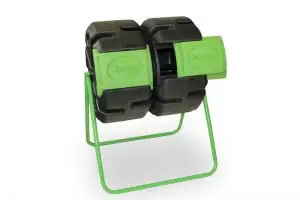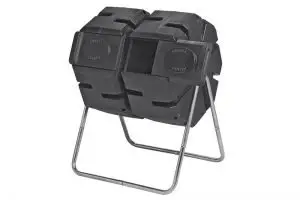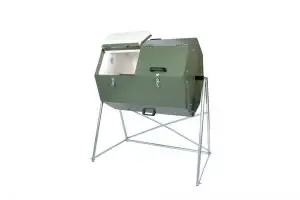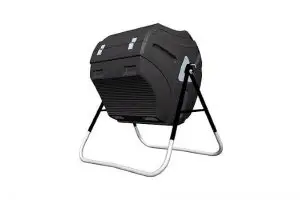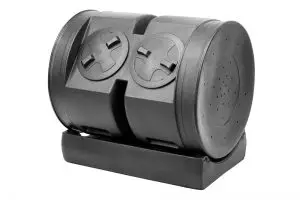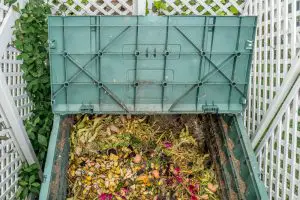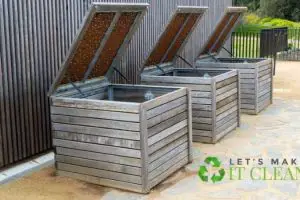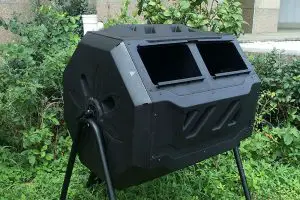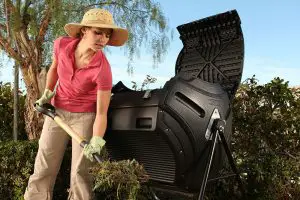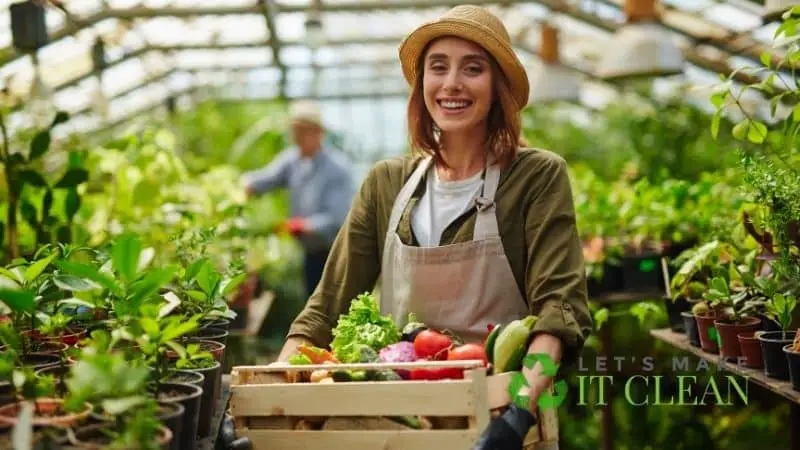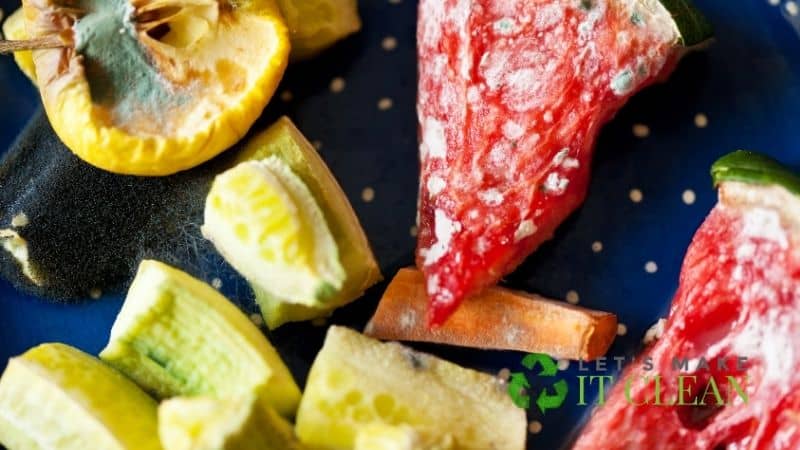Kids can make high-quality composted given compostable material and simple instructions. Allow your children to experiment with composting different contents. They can also have fun with worms in vermicomposting.
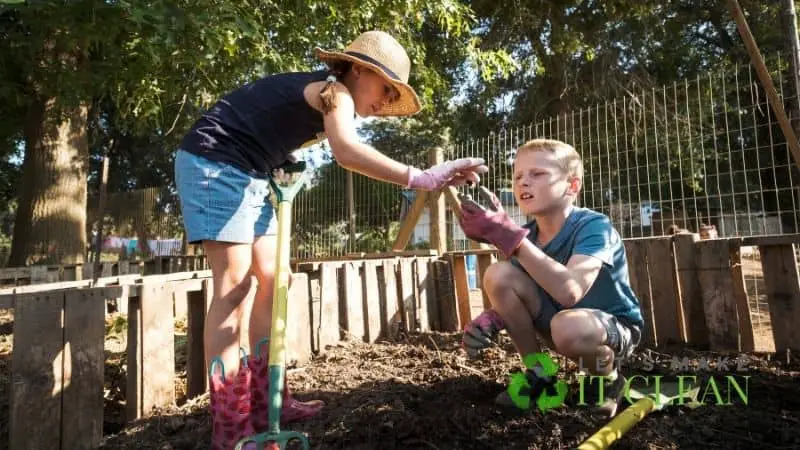
Make composting a routine for the children. Come up with a compost recipe that is easy to prepare and guide the kids to make the recipe.
Quick Navigation
Food leftovers and kitchen scraps are part of the waste that people dispose of each day, polluting the environment. When you incinerate some waste material, you release toxic emissions. It would be best to carry out composting experiments with your kids.
Kids can compost the composting content that ends up in a location such as the ocean or landfills. This article gives you a guide to compost for kids.
How Do You Explain Compost to a Child?
The first step is explaining to the child what compost is. You explain that compost is a type of fertilizer that you make by composting plant material.
Further, explain that when you control the organic matter’s decomposition process, you add to a compost bin, you are composting. You regulate how and when the composting material breaks down to form compost.

It would be best if you made high-quality compost from kitchen scraps, food scraps, leftovers, and vegetable waste. Bacteria and other microorganisms will work on your compost pile to give you finished compost.
How Do You Make Compost for Beginners?
As a beginner, you need a site that you can easily access. The site should also be at a convenient location that doesn’t affect the neighbors with horrible odors.
A place you can have the bin is the bottom corner of your garden. Place the compost heap on the soil or grass. If you place the heap on concrete or a yard that has been paved, you limit the microbial activity facilitated by soil-heap contact.
Make sure you position your bins in a strategic position that has partial exposure to the sun. This positioning will help maintain optimum temperatures resulting in faster decomposition. For appropriate moisture levels, let the children play with a spray bottle to water the bin’s content.
To get the best compost base, place sand or bricks on the base, which should be one meter long and one meter wide; you can leave spaces between the bricks to help in the aeration process. Also, space will provide an escape area for excess water.
After making the base, you can start placing other layers by adding other waste. Placing the compost heap ensures you add water to the compost, mostly if the area you are in is dry. The water helps in making the whole composting process fast and efficient.
Give the compost around three to six months to ensure it composts fully. After six months, the compost will be ready to use. If you keep adding waste, the full compost layer is the bottom-most, and in this case, you need to dig it up.
When the compost is ready, it smells like thick earth; if it is still smelling like decay, it is not ready. For the material that has not yet decomposed, you can use them in making your next compost.
How Can I Compost Cheaply?
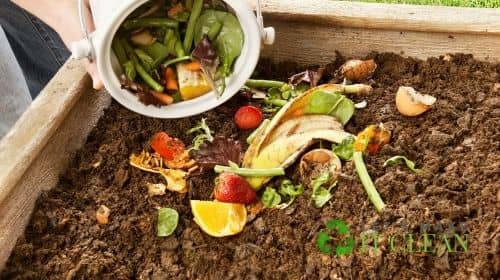
The first step is getting an appropriate place to position your compost bins. If you have a shaded space in your home that partially exposes the compost bin to the sun, it is best for the composter.
Build a composting bin that the children can reach with ease. Have a proper water drain to prevent excess moisture in the composter. You can also buy a bin if you aren’t in a position to build one.
Make the composting process fun by playing a game with the children. Ask them to compete in gathering organic material that would be sent to landfills for making compost. Now add all the content to your bin and start making compost for your soil.
Compost Facts for Kids
The best way to teach your kids to compost is by putting the compost-making process in the family routine; that way, it becomes hard for them to forget. Below are tips for teaching kids how to compost.
1. Teach Children How to Identify Compostable Matter
Start by teaching them what you need in the compost-making process. This includes all compostable material in the household. Examples of such materials include coffee grinds, tea bags, leaves, tree twigs, eggshells, vegetable waste, fruits, newspapers, and all the coffee and tea filters.
2. Teach Children Material That Should Not Be Composted
The next step you should teach your kids is what you should not compost and explain to them why they can easily remember.
The first thing you should not add to a bin is meat scraps, first, they produce a rotting smell. Apart from that, they rot slowly compared to other compost materials. The foul odor from the meat will attract all animals, especially if the composting process is happening outdoors. It can draw animals like dogs, rats, raccoons, and other kinds of vermin.
Human and pet feces are also contents that shouldn’t be added to the compost pile. These two could transmit diseases to the garden soil (see how to compost human waste).
Other materials that shouldn’t be added to the compost pile are dead plants as they transmit the disease. Bones should also be avoided as they never rot. Other garbage materials include milk, fat, oil, and cheese.
3. Compost Food Scraps in Compost Container and Bucket Gardens
You don’t have to have a garden to involve your kids in the gardening and composting process. Come up with container gardens and plant vegetables, and make compost with your kids to use on the field. This will prevent waste from ending up in landfills.
Give them their container to maintain as their project as it is exciting and a project that benefits them.
You might like: Start Composting In The City
Composting Ideas for Children
Compost Fruit and Vegetable Scraps in an Interesting Compost Bin
To make the composting process easy and fun, get a composting container easy to identify. You can even get kitchen garbage cans. There are those cans that have a trash can, a recycle can, and a compost can.
A countertop compost can is also good, but containing the smell may be problematic. You can improvise a can for them to use but make sure it is right for the process and won’t affect the composting process. Add water to the can’s content by using a spray bottle.
Plan for Regular Composting Activities
Have arrangements for a composting activity every week with your children. Make the process a family bonding activity that brings you together in a productive way.
An activity such as adding worms to a vermicomposter is one that kids enjoy. Similarly, harvesting finished compost and applying it to the garden will enlighten your kids on matters composting.
Practice Vermicomposting
Kids may not be thrilled by kitchen waste and food scraps as much as they would be intrigued by worms. Allow your children to hold the red wigglers as they transplant them from worm farms to the worm beds.
Make sure your children don’t add pet waste to the vermicomposter. The pet waste results in horrible smells and may transfer diseases to your soil.
Conclusion
Compost for kids is easy to make. The practices you involve your children in will help them learn the importance of composting.
They will also be helping the environment through composting materials that would pollute the environment if left unattended.

